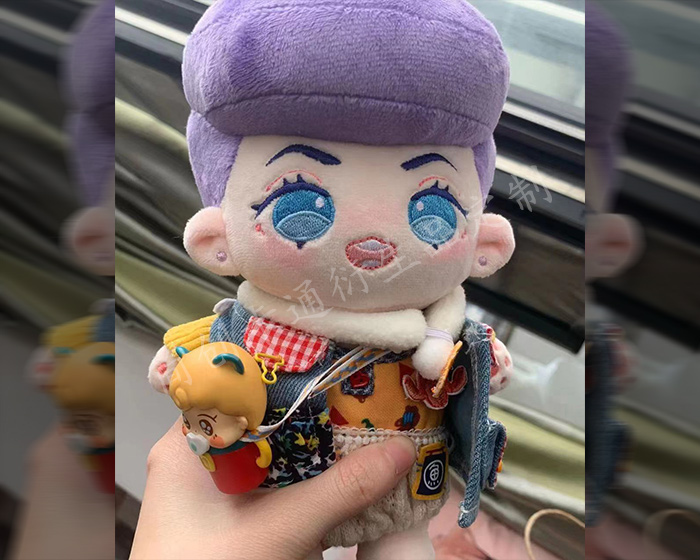The terms “plushie” and “stuffed animal” are often used interchangeably, but there are subtle distinctions between the two that can enhance our understanding of these beloved toys. Both serve as sources of comfort and companionship, but their characteristics and cultural implications may differ.
1. Definition and Origins
A stuffed animal typically refers to any toy designed to resemble an animal, filled with soft materials like cotton or polyester fiberfill. The term encompasses a wide range of creatures, from teddy bears and bunnies to more exotic animals like lions or dinosaurs. stuffed animals have a long history, with roots tracing back to the late 19th century when they became popularized as children’s toys.
In contrast, a plushie (short for plush toy) is a broader term that includes not only animals but also other forms and characters. Plushies can represent fictional creatures, human figures, or even inanimate objects that are designed with soft fabrics. The term “plush” emphasizes the soft, cuddly texture, often made from high-quality, velvety fabrics. Plushies have gained popularity in various subcultures, particularly in fandoms where characters from anime, video games, and movies are turned into collectible plush forms.
2. Design and Aesthetics
Stuffed animals are generally designed to be realistic representations of their animal counterparts. They often have features that closely mimic the appearance of real animals, including lifelike colors, fur textures, and proportions. For example, a stuffed bear might look like a classic teddy bear with rounded features and soft fur, embodying the comforting aspect of childhood toys.
Plushies, however, often exhibit a more whimsical or exaggerated design. They can have oversized heads, simplified features, and vibrant colors that aren’t necessarily representative of real animals. This stylized approach allows plushies to express a broader range of emotions and aesthetics, catering to various tastes and fandoms. For instance, a plushie of a cartoon character might have an exaggerated smile and bright colors, designed to appeal to fans of that character or series.
3. Purpose and Emotional Connection
Both plushies and stuffed animals serve as sources of comfort, but their emotional significance can differ. Stuffed animals are often associated with childhood nostalgia and comfort, playing a crucial role in the formative years of many children. They are frequently used as security objects, helping children feel safe during times of stress or uncertainty.
Plushies, while also comforting, may serve more as collectibles or expressions of fandom. Many adults and teens engage in collecting plushies from their favorite shows, movies, or games, creating a sense of community around shared interests. The emotional connection to plushies often ties to the characters or stories they represent, making them significant beyond just their physical form.
4. Cultural Impact
The cultural impact of both stuffed animals and plushies is significant, as they have become integral to various social and emotional experiences. Stuffed animals often appear in childhood memories, symbolizing innocence and comfort. Plushies, on the other hand, have found their place in popular culture, frequently featured in merchandise, conventions, and online communities.
Conclusion
In summary, while the terms “plushie” and “stuffed animal” can overlap, they refer to different concepts in the realm of soft toys. Stuffed animals are typically realistic representations of real creatures, evoking nostalgia and comfort for children. Plushies encompass a broader range of designs, often leaning into whimsy and fandom culture. Understanding these distinctions enriches our appreciation for these beloved toys, highlighting their varied roles in our lives. Whether for comfort or collection, both plushies and stuffed animals hold a special place in the hearts of many.
The following are some examples of plush toys that our factory customizes for customers. Check out if there is one that you like best.
-
Custom Animal Plush
-
Cute Plush Doll
-
Custom Stuffed Animals
-
Plush Toy
-
Plush Dolls
-
Custom Stuffed Dolls
-
Custom Plush Toy
-
Cotton Dolls
-
Weighted Plush Toys
-
Cute Stuffed Animals
-
Custom Pet Stuffed Animal
-
Warmies Stuffed Animals
-
Weighted Stuffed Animal
-
Soft Toys
-
Plush Stuffed Doll
-
Custom Stuffed Dolls
-
Plush Maker
-
Bear Stuffed Toy
-
Anime Plush
-
Custom Stuffed Animal
-
Anime Plush
-
Custom Plush Toy
-
Personalised Stuffed Animal
-
Plush Animal Toys
-
Custom Plush Makers
-
Custom Plushies
-
Toy Manufacturer
-
Rag Doll Making
-
Custom Toys
-
Dog Plush Toys
-
Custom Rag Doll
-
Stuffed Animals
-
Custom Plush
-
Custom Plush Dolls
-
20cm Cotton Doll
-
Jojo Plush
-
Custom Doll
-
Jojo Doll
-
Large Plush Toys
-
15cm Cotton Doll
-
Dumpling Plush
-
Cotton Doll


























